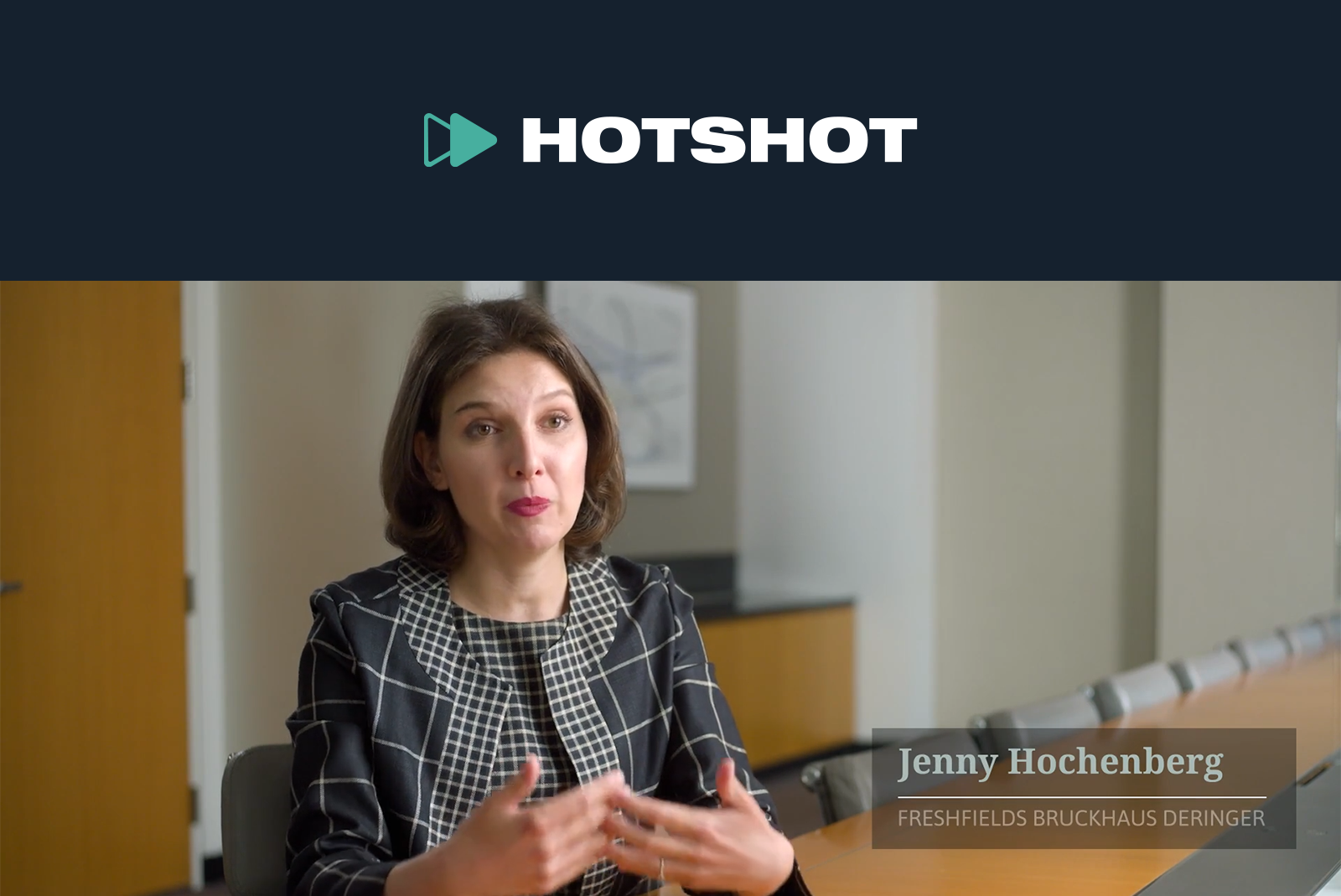
The purpose of this commentary is twofold: (1) to identify deficiencies in the 340B statute[1] related to the use of multiple contract pharmacies and delivery to them—deficiencies that have resulted in the need for courts to resolve issues through judicial interpretation, and (2) to encourage policymaker action to address these deficiencies.
Overview of 340B Program
Under the 340B program, the federal government requires drug manufacturers participating in Medicare or Medicaid to sell certain covered drugs to qualifying health-care organizations at discounted prices.[2] Health-care organizations that qualify to enter the program—referred to as covered entities—include hospitals and providers serving low-income or rural populations.[3] The maximum price that drug manufacturers may charge a covered entity for covered drugs is the average manufacturer price for the preceding quarter minus a statutorily mandated rebate.[4] The discounts provided to covered entities typically range from 20 to 50 percent off the market price of eligible drugs.[5] As of 2020, there were approximately 50,000 registered 340B covered entity sites, with 2021 discounted drug purchases totaling $44 billion,[6] or approximately 7.6 percent of the $576.9 billion of nationwide pharmaceutical purchases in 2021.[7]
Conceptually, covered entities can stretch scarce resource dollars by profiting from the difference between their 340B drug resales—paid at full Medicare and insurance reimbursement rates—and the discounted drug acquisition costs. Covered entities can use the profits to finance affordable patient care for underserved communities.[8]
Misconduct
However, there are risks that covered entities and drugmakers may operate in ways that contradict Congress’s intentions. For example, of the 189 audits of covered entities performed by regulators in 2022, sixty-six—more than one-third—included findings of misconduct.[9] Likewise in 2022, regulators issued at least thirty-four citations to drug manufacturers requiring refunds to covered entities.[10]
Part of this contradiction can be attributed to statutory silence—the 340B statute does not require covered entities to use their profits in a way that subsidizes needed-but-unprofitable care.[11] But even where the statute expressly prohibits abusive activities, certain business practices by covered entities have amplified the risks of abuse.[12]
Covered Entities’ Use of Multiple Contract Pharmacies
Of particular concern is the covered entity practice of using multiple contract pharmacies to handle the delivery and dispensing of purchased 340B drugs.[13]
When the 340B program first began, few covered entities had their own in-house pharmacies to manage purchased drugs.[14] Thus, in order to expand the reach of the 340B program, the Department of Health and Human Services (“HHS”) allowed covered entities to dispense 340B drugs through contract pharmacies—pharmacies not owned or operated by covered entities.[15]
The extent to which covered entities can use contract pharmacies to dispense medications purchased under the 340B program for their patients raises some concerns.[16] Drug manufacturers have alleged that covered entities use multiple contract pharmacies to engage in prohibited practices,[17] such as diversion of discount drugs to ineligible patients[18] or duplicative discounting.[19]
Federal Support for Covered Entities’ Use of Multiple Contract Pharmacies
Despite these concerns, federal regulators have required drugmakers to accept covered entity demands for use of multiple contract pharmacies. Under the HHS “ship to, bill to” process, the covered entity owns the drugs after purchase and is billed directly for them, but the drugmaker must physically deliver the drugs to all contract pharmacies that the covered entity designates.[20] Beginning in 2010, HHS permitted covered entities to use an unlimited number of contract pharmacies as long as applicable legal requirements were satisfied. Drugmakers objected to the practice out of fears that it enables covered entities to avoid compliance mechanisms.[21]
Pushback from Drugmakers
The 340B statute says nothing about contractual delivery terms, where drugmakers must physically deliver drugs sold, or what party has the right to make the delivery determination. Rather, the statute only imposes price restrictions on drugmakers.[22] Thus, in 2020, three drugmakers—Sanofi, Novo Nordisk, and AstraZeneca—began requiring 340B covered entities to accept the drugmakers’ conditions for place of delivery.[23] Essentially, the three drugmakers offered to deliver purchased drugs to either an in-house pharmacy or a single contract pharmacy of the covered entity’s choosing, but not multiple contract pharmacies.[24]
HHS: Advisory Opinion No. 20-06
HHS responded by issuing Advisory Opinion No. 20-06, which stated that once drugs have been “purchased by” covered entities, the delivery point is irrelevant to the agreement.[25] Likewise, because contract pharmacies have long been used in connection with the 340B program, HHS found that drugmaker-imposed restrictions on their use was impermissible.[26] Thus, according to HHS, covered entities should be free to require physical delivery to contract pharmacies—and drugmakers must comply.[27]
HHS: Lack of Broad Rulemaking and Interpretive Authority
Unfortunately for federal regulators, HHS lacks broad rulemaking or interpretative authority to achieve its policy goals.[28] In general, a federal agency’s administrative powers are limited to those powers delegated to it statutorily by Congress.[29] Furthermore, while courts will generally defer to reasonable agency interpretations of ambiguous statutes,[30] such deference is granted only when the agency acts under statutorily delegated rulemaking authority.[31] If an agency adopts a statutory interpretation beyond its statutory authority, the interpretation lacks the force of law.[32]
Regarding the 340B program, HHS has only narrow rulemaking authority pertaining to three specific administrative functions. First, Congress authorized HHS to establish an administrative dispute resolution process for drugmakers and covered entities contesting the conduct of their counterparties.[33] Second, the statute allows HHS to establish by regulation a schedule of civil monetary penalties for violations.[34] Neither of these provisions grants HHS the authority to create contractual rights or impose contractual duties upon drugmakers or covered entities in their dealings with each other.
Finally, the statute directs HHS to issue regulations to define the standards and methodology for calculating the maximum price that drugmakers can charge covered entities—referred to as the ceiling price in the statute.[35] This provision deals with the complex process of determining the average manufacturer price and the statutorily mandated rebate to which covered entities are entitled for each drug covered by the statute.[36] Thus, HHS does have some authority to create substantive contractual rights between covered entities and drugmakers—the agency establishes the maximum price for any sale. But the authority to calculate the ceiling price is not necessarily a grant of authority to regulate other aspects of the contractual relationship between the drugmaker and the covered entity.
Third Circuit Ruling
Clearly, regulators are limited in their ability to achieve policy goals via regulatory guidance. Thus, after HHS issued Advisory Opinion No. 20-06 and then violation letters to Sanofi, Novo Nordisk, and AstraZeneca (on the basis that the companies were in violation of the contract pharmacy delivery requirement as specified by the advisory opinion), the drugmakers challenged the regulatory actions in court.[37] In January 2023, the U.S. Court of Appeals for the Third Circuit ruled in favor of the plaintiffs in Sanofi Aventis U.S. LLC v. U.S. Department of Health & Human Services.[38] The case consolidated conflicting federal district court rulings over whether Advisory Opinion No. 20-06 and the resulting violation letters were valid.[39]
According to HHS, the ability to regulate the delivery point was inherent to its statutory authority to regulate the “purchase” of eligible drugs.[40] HHS relied on the Uniform Commercial Code (U.C.C.) for its logic.[41] Under the U.C.C., by default, ownership of goods passes from seller to buyer when the seller’s delivery responsibilities are complete.[42] According to HHS, because a “purchase” by a covered entity necessarily requires a transfer of ownership, HHS may dictate that the covered entity gets to designate how it takes title by designating the place of delivery.[43]
Furthermore, in Advisory Opinion No. 20-06 and before the Third Circuit, HHS conceded its limited regulatory rulemaking authority[44]—but that was of little consequence, according to the agency. Because it had long required that drugmakers sell to contract pharmacies, HHS claimed Advisory Opinion No. 20-06 did not create any new substantive rights or duties.[45] HHS argued that this long-standing practice, combined with the statutory authority inherent in its role of regulating 340B sales relationships between drugmakers and covered entities, justified its regulatory actions.[46]
The Third Circuit disagreed, finding that HHS’s requirements on drugmakers exceeded what the statute permits:
The “purchased by” provision imposes only a price term for drug sales to covered entities, leaving all other terms blank. HHS has suggested that covered entities get to fill in those blanks so long as they foot the bill. However, when Congress’s words run out, covered entities may not pick up the pen.[47]
Essentially, because the statute’s language states nothing about how the parties are to handle physical shipment and delivery of purchased drugs, there is no indication that Congress intended to give covered entities the authority to dictate those terms in their purchase agreements with drugmakers.
Implicit in the Third Circuit’s opinion were concepts from the U.C.C. distinguishing different rights under a contract for the sale of goods.[48] An understanding of these distinct rights is key to understanding the flaws in HHS’s logic, as HHS was essentially dictating what rights must arise in a sales contract between covered entities and drugmakers without the statutory authority to do so.
Under the U.C.C., a contract may exist even if the parties do not agree on all terms, with “gap filler” provisions operative only when the parties do not have express agreement on the specific term.[49] Among the U.C.C. gap filler terms are default provisions on price[50] and place of delivery.[51] Under those provisions, the parties’ express agreement trumps the U.C.C. default terms.
The Third Circuit opinion acknowledged that the 340B program allowed HHS to restrict the parties’ abilities to set their prices—drugmakers must sell at no more than the ceiling price set by HHS.[52] But because the 340B statute is silent regarding place of delivery, there is no corresponding restriction on negotiating delivery terms.[53]
The HHS advisory opinion misconstrued the U.C.C. provisions on this point. By default, under the U.C.C., ownership of goods transfers when the seller’s delivery obligations are complete. But contractual parties are free to negotiate an alternative moment of title transfer.[54] Furthermore, if the parties do not agree on a place of delivery, delivery of goods is deemed to occur at the seller’s place of business.[55]
Thus, under the default U.C.C. provisions, ownership of goods transfers at the seller’s place of business, and delivery to the buyer’s chosen location is not required by the U.C.C. for transfer of title or completion of sale. Contrary to HHS’s interpretation, the U.C.C. expressly contemplates that the buyer and seller can negotiate these terms.
HHS took the position that because it is responsible for enforcing the parties’ rights and duties with regard to the sale as a whole, it can regulate these sale terms.[56] But, as the Third Circuit held, the 340B statute does not empower HHS to impose these contractual terms on the parties.[57] The statute only expressly permits HHS to regulate price.[58] HHS’s limited 340B rulemaking and interpretive authority prevents it from conflating other sale rights to reconcile ambiguity in the statute and otherwise achieve policy goals.
Other Court Action
As of February 2023, similar cases were pending in the U.S. Court of Appeals for the Seventh Circuit and the U.S. Court of Appeals for the D.C. Circuit, and court watchers do not expect a circuit split.[59]
Likewise, other courts have ruled in favor of drugmakers that received violation letters from HHS for imposing contract pharmacy restrictions. For example, in November of 2021, in a lawsuit by Novartis and United Therapeutics, the district court found that the plaintiffs’ conditions imposed on qualifying 340B entities did not violate Section 340B as alleged in HHS’s violation letters.[60] The court also found that the drugmakers provided “credible evidence” that using multiple contract pharmacies “increased the potential for fraud in the 340B program.”[61] The court recognized, however, that HHS has “legitimate concerns about the degree to which the manufacturers’ new conditions have made it difficult for covered entities to obtain certain drugs at discounted prices.”[62]
Significant Challenges for Covered Entities
If, as the Third Circuit held, the 340B statute imposes restrictions only on price, drugmakers can force acceptance of all other contract terms—and will have gained significant leverage in negotiating purchase agreements with covered entities.
A 2022 survey of 482 covered entities with contract pharmacy relationships details an anticipated $448,000 per entity annual loss for critical-access hospitals and a $2.2 million per entity annual loss for more extensive facilities after fourteen drugmakers announced restrictions, with more than 75 percent of covered entities needing to cut programs and services if the restrictions remain permanent.[63]
Congressional Action Needed
Drugmakers, pharmacy benefit managers, and covered entities have competing interests related to the profit on the drug sales. In between, federal regulators seek to control their own Medicare reimbursement costs while promoting the congressionally intended benefits to health-care providers. Unfortunately, ambiguity in the 340B statute raises questions about the appropriate interpretation of the statute and the scope of HHS’s authority to ensure compliance with program goals.
While the 340B program has the attention of some lawmakers, proposed legislation does not address the specific issues with contract pharmacies or the general issues of regulatory empowerment. For example, on April 6, 2023, Representatives Abigail Davis Spanberger and Dusty Johnson introduced the “PROTECT 340B Act of 2023” in the U.S. House of Representatives.[64] The bill primarily addresses reimbursement discrimination against covered entities by health insurers and pharmacy benefit managers.[65] While the bill acknowledges the use of contract pharmacies, it does not give HHS the explicit statutory authority to direct when and how contract pharmacies may be used in the delivery of drugs.[66]
The multitude of policy questions surrounding the 340B program will not be answered through litigation alone. These questions go beyond the use of contract pharmacies by covered entities and restrictions by drugmakers. Like a loose thread on a sweater, the more one pulls on 340B, the more the legislation unravels. For example, it is unclear whether the program fulfills its goal of expanding care to needy communities.[67] And from a policy standpoint, observers question the appropriate use of the revenue generated by covered entities from 340B discounted drugs and who should qualify as a “patient” of a covered entity.[68] Other commentators have highlighted the numerous administrative difficulties associated with the 340B program.[69]
Courts are only willing to implement HHS’s reforms with explicit statutory authority.[70] As courts strike down HHS efforts to pursue policy goals, congressional inaction may signal implicit acquiescence of a paralyzed administrative agency. To preserve the long-standing and often critical role of contract pharmacies in the 340B system, Congress must pass legislation expressly empowering HHS to coordinate their use.
The views expressed in this publication represent those of the author(s) and do not necessarily represent the official views of HCA Healthcare or any of its affiliated entities.
Public Health Service Act § 340B, 42 U.S.C. § 256b (2022). ↑
Id. § 256b(a). ↑
Id. § 256b(a)(4); see also Casey W. Baker et al., Is the 340B Hospitals Battle at the Supreme Court Over?, 11 Pharmacy Times Health Sys. Edition 34 (2022). ↑
42 U.S.C. § 256b(a)(1)–(2). The 340B program incorporates pricing mechanics of § 1927(c) of the Social Security Act (codified at 42 U.S.C. § 1396r-8(c)) for calculating the required rebates. ↑
Karen Mulligan, The 340B Drug Pricing Program: Background, Ongoing Challenges, and Recent Developments (U.S.C. Schaeffer Ctr. for Health Pol’y & Econ. 2021). ↑
See Bobby Clark & Marlene Sneha Puthiyath, The Federal 340B Drug Pricing Program: What It Is, and Why It’s Facing Legal Challenges, Commonwealth Fund (Sept. 8, 2022). ↑
Eric M. Tichy et al., National Trends in Prescription Drug Expenditures and Projections for 2022, 79 Am. J. Health-Sys. Pharmacy 1158 (2022). ↑
See Joseph D. Bruch & David Bellamy, Charity Care: Do Nonprofit Hospitals Give More than For-Profit Hospitals?, 36 J. Gen. Internal Med. 3279 (2021); see also, Baker, supra note 3; Am. Hosp. Ass’n v. Becerra, 142 S. Ct. 1896, 1905–06 (2022). ↑
Program Integrity: FY22 Audit Results, Health Res. & Servs. Admin. (last updated May 22, 2023). ↑
Manufacturer Notices to Covered Entities, Health Res. & Servs. Admin. (rev. July 2023). ↑
See Stuart Wright, OEI-05-13-00431, Memorandum Report: Contract Pharmacy Arrangements in the 340B Program 3 (2014); see also 340B Reporting and Accountability Act, S. 1182, 118th Cong. § 2 (2023), which would require covered entities to pass savings on to patients upon the resale of the drugs. ↑
Wright, supra note 11, passim. ↑
Id. ↑
See Sanofi Aventis U.S. LLC v. U.S. Dep’t of Health & Hum. Servs., 58 F.4th 696, 700 (3d Cir. 2023). ↑
59 Fed. Reg. 25,110, 25,111–12 (May 13, 1994) (In response to a comment requesting that the use of contract pharmacies be disallowed, HHS stated, “It is a customary business practice for manufacturers to sell to intermediaries as well as directly to the entity. Entities often use purchasing agents or contract pharmacies, or participate in GPOs [group purchasing organizations]. By placing such limitations on sales transactions, manufacturers could be discouraging entities from participating in the program. Manufacturers may not single out covered entities from their other customers for restrictive conditions that would undermine the statutory objective.”); see also Sanofi, 58 F.4th at 700. ↑
Sanofi, 58 F.4th at 700. ↑
Id. ↑
42 U.S.C. § 256b(a)(5)(B) (2022). ↑
Id. § 256b(a)(5)(A)(i). ↑
75 Fed. Reg. 10,272, 10,276–77 (Mar. 5, 2010). ↑
Sanofi, 58 F.4th at 700. While HHS does have the ability to audit covered entities, including those that have a contract pharmacy model in place, it is unclear how effective this practice is at preventing unlawful activities. See Program Integrity: FY22 Audit Results, supra note 9. ↑
See 42 U.S.C. § 256b(a). ↑
Sanofi, 58 F.4th at 700–01. ↑
Id. ↑
Dep’t of Health & Hum. Servs. Off. Gen. Couns., Advisory Op. 20-06 on Contract Pharmacies Under the 340B Program 2–3 (Dec. 30, 2020) [hereinafter Advisory Op. 20-06]. Note that HHS rescinded Advisory Opinion 20-06 while the litigation was pending. Nevertheless, the U.S. Court of Appeals for the Third Circuit considered the advisory opinion because HHS continued to hold the positions asserted therein. See Sanofi, 58 F.4th at 703. ↑
Advisory Op. 20-06, supra note 25, at 3–5. ↑
See Sanofi, 58 F.4th at 704. ↑
See Pharm. Rsch. & Mfrs. of Am. v. U.S. Dep’t of Health & Hum. Servs., 43 F. Supp. 3d 28 (D.C. Cir. 2014). ↑
See id. at 35 (citing Bowen v. Georgetown Univ. Hosp., 488 U.S. 204, 208 (1988); Atl. City Elec. Co. v. Fed. Energy Regul. Comm’n, 295 F.3d 1, 8 (D.C. Cir. 2002)). ↑
Chevron, U.S.A., Inc. v. Nat. Res. Def. Council, Inc., 467 U.S. 837 (1984). ↑
United States v. Mead, 533 U.S. 218, 226–27 (2001). ↑
See Pharm. Rsch. & Mfrs. of Am., 43 F. Supp. 3d at 36–37 (citing Mead, 533 U.S. at 234). ↑
42 U.S.C. § 256b(d)(3)(A) (2022). This authority is limited to just six functions expressly enumerated in the statute—(1) designating or establishing a decision-making official or decision-making body to review and resolve claims by covered entities concerning overcharges, (2) establishing deadlines and procedures to make sure that claims are resolved fairly and expeditiously, (3) establishing discovery procedures for covered entities in connection with such claims, (4) requiring drugmakers to conduct audits of covered entities prior to initiating any claim for misconduct, (5) allowing consolidation of claims by more than one drugmaker against the same covered entity, and (6) allowing joint claims by multiple covered entities against the same drugmaker. See 42 U.S.C. § 256b(d)(3)(B); see also Pharm. Rsch. & Mfrs. of Am., 43 F. Supp. 3d at 42. ↑
42 U.S.C. § 256b(d)(1)(B)(vi). ↑
Id. § 256b(d)(1)(B)(i)(I). ↑
See Pharm. Rsch. & Mfrs. of Am., 43 F. Supp. 3d at 43–44. ↑
Sanofi Aventis U.S. LLC v. U.S. Dep’t of Health & Hum. Servs., 58 F.4th 696, 701 (3d Cir. 2023). ↑
Sanofi, 58 F.4th 696. ↑
AstraZeneca Pharms. LP v. Becerra, 2022 U.S. Dist. LEXIS 27842 (D. Del. Feb. 16, 2022); Sanofi-Aventis U.S., LLC v. U.S. Dep’t of Health & Hum. Servs., 570 F. Supp. 3d 129 (D.N.J. 2021). ↑
Sanofi, 58 F.4th at 703–05. ↑
Advisory Op. 20-06, supra note 25, at 3. ↑
U.C.C. § 2-401(2) (2002). ↑
Advisory Op. 20-06, supra note 25, at 2–3. ↑
Sanofi, 58 F.4th at 703. ↑
Advisory Op. 20-06, supra note 25, at 4. ↑
Id. at 4–5. ↑
Sanofi, 58 F.4th at 704. ↑
U.C.C. art. 2 (2002). ↑
See id. § 2-204(3) (“Even though one or more terms are left open, a contract for sale does not fail for indefiniteness if the parties have intended to make a contract and there is a reasonably certain basis for giving an appropriate remedy.”). ↑
Id. § 2-305. ↑
Id. § 2-308. ↑
Sanofi, 58 F.4th at 704–05. ↑
Id. ↑
U.C.C. § 2-401(2) (“Unless otherwise explicitly agreed title passes to the buyer at the time and place at which the seller completes his performance concerning the physical delivery of the goods.” (emphasis added)). ↑
Id. § 2-308(a) (“Unless otherwise agreed . . . the place for delivery of goods is the seller’s place of business.” (emphasis added)). ↑
Sanofi, 58 F.4th at 704. ↑
Id. ↑
Id. ↑
Avalon Zoppo, SCOTUS Bound? After Appellate Ruling, What Is Next in 340B Drug Discount Cases?, N.Y. L.J., Feb. 15, 2023, at 2. ↑
Novartis Pharms. Corp. v. Espinosa, 2021 U.S. Dist. LEXIS 214824 (D.D.C. Nov. 5, 2021). ↑
Id. at *29. ↑
Id. ↑
340B Health, Contract Pharmacy Restrictions Represent Growing Threat to 340B Hospitals and Patients Survey Results (2022). ↑
PROTECT 340B Act of 2023, H.R. 2534, 118th Cong. (2023). ↑
Id. § 3. ↑
Id. ↑
See Sunita Desai & J. Michael McWilliams, Consequences of the 340B Drug Pricing Program, 378 New Eng. J. Med. 539 (2018). ↑
See Mulligan, supra note 5. ↑
See Lowell M. Zeta, Comprehensive Legislative Reform to Protect the Integrity of the 340B Discount Program, 70 Food & Drug L.J. 481 (2015). ↑
See Novartis Pharms. Corp. v. Espinosa, 2021 U.S. Dist. LEXIS 214824, at *30 (D.D.C. Nov. 5, 2021) (“[A]ny future enforcement action must rest on a new statutory provision, a new legislative rule, or a well-developed legal theory that Section 340B precludes the specific conditions at issue here.”). ↑











